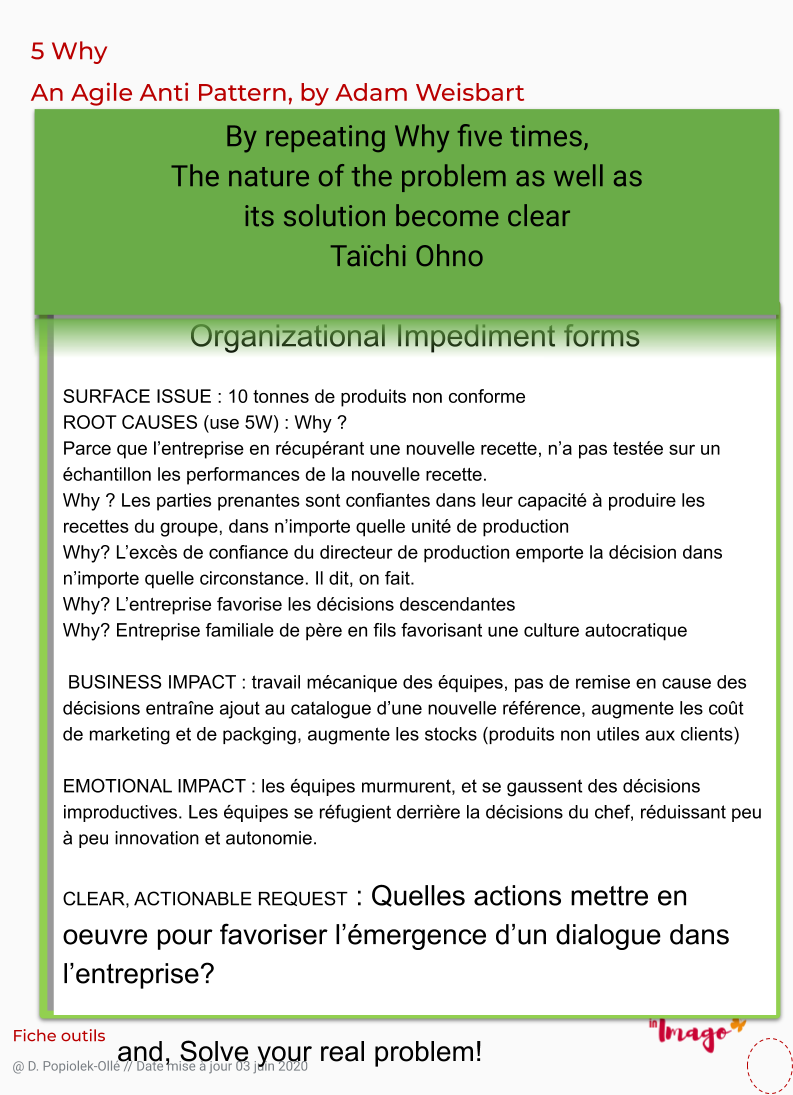Quick feedback on the consequences of an autocratic, production-oriented culture instead of a customer culture.
Context: agro-food company, 3000 people, 5 production sites around the world
The company decides to bring back to France a recipe produced in the United States. A manufacturing error compromises the characteristics of the product on the visual aspects, that are visible to the customer, without altering the taste.
The production manager decides, without consulting his customers or even the company’s sales representatives, to modify the packaging, therefore creating a new product in the range to be distributed.
Thus, the new packaging makes it possible to offer the product in 5g instead of 100 grams and makes it possible to introduce a modification of the visual aspects without having to inform customers of the production error.
However, it turns out that customers in their own recipes only use the product in multiples of 100 grams. Therefore, it is a safe bet that the 5g product will be little used.
This example perfectly illustrates the reflexes cultivated since the arrival of the industrial era, namely making a decision and transferring the problem to others, without adding value to the production chain.
By applying, in a customer culture, the Agile Anti pattern problem identification technique, the production manager would have identified the question to be asked and evaluated the impact of his decision on costs, as in his relationship with customers and his colleagues.
Here is a simulation of what could have been identified with this Agile Anti pattern:

- Acknowledge your mistakes
- Engage in internal and external dialogue
- Manage the problem sustainably and economically
Author : Dominique Popiolek-Ollé, Transmutation leader, Agile Executive Coach, Founder of In Imago, management consulting and disruptive transformation.

